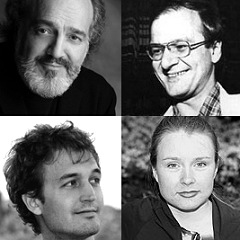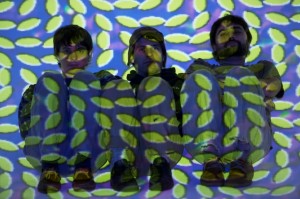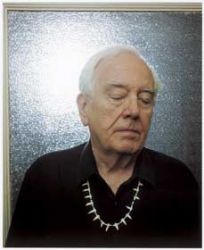 Maybe it’s all that cold, dark and ice; stuck inside with nothing else to do for a lot of days must be conducive to composition. At least it feels that way with regard to Canada, since this huge but relatively sparsely-populated space has what seems a disproportionate number of composers that I just love.
Maybe it’s all that cold, dark and ice; stuck inside with nothing else to do for a lot of days must be conducive to composition. At least it feels that way with regard to Canada, since this huge but relatively sparsely-populated space has what seems a disproportionate number of composers that I just love.
And now the Canadian Music Centre has made it awfully easy for YOU to love them as well; at their site you’ll now find a service called CentreStreams, which offers streaming access to the Ann Southam Audio Archive. This comprises a huge number of concert and radio recordings made by the CBC, of Canadian composers A to Zed. Not only that: where else could you find 41 (!) archival recordings of seminal Canadian composer Claude Vivier‘s music — with no less than 6 (!!) different versions of Pulau dewata — all at your computer’s beck and call? They also have a nifty feature that can give you a random paylist by genre (piano, orchestra, vocal, etc.), so your listening experience is never the same twice. Many composers even have the scores of works freely available as PDF files.
You do have to register (free) to get the streams, but it’s quick and painless. CentreStreams is accessible from the CMC homepage, but even easier is heading to the “find a composer” section and browsing the alphabet. Besides the established names there’s also a fair collection of the young guns as well, so you can be right expert on contemporary Canadian music in no time! Personal favorites old and new, that I can pretty well guarantee for excellence, are John Rea, Claude Vivier, Emily Hall, Aaron Gervais (all four pictured above), José Evangelista, R. Murray Schafer, Melissa Hui, John Mark Sherlock, Linda Catlin Smith, Allison Cameron, Rodney Sharman, Monique Jean, Gyula Csapo, Louis Dufort, Gilles Tremblay, John Kosrud, Chiyoko Szlavnics… the list goes on and on. What better way to pass a little of your own closed-in winter days, than discovering some new favorite piece or composer?

 Interpretations continues its twentieth season of provocative programming in New York City. Founded and curated by baritone Thomas Buckner in 1989, Interpretations focuses on the relationship between contemporary composers from both jazz and classical backgrounds and their interpreters, whether the composers themselves or performers who specialize in new music. To celebrate, Jerry Bowles has invited the artists involved in this season’s concerts to blog about their Interpretations experiences. Produced in tandem with La Mama ETC and Performing Artservices, the centerpiece of the series this year is a two-week, three opera, 10 performance, mini-retrospective of the recent works of
Interpretations continues its twentieth season of provocative programming in New York City. Founded and curated by baritone Thomas Buckner in 1989, Interpretations focuses on the relationship between contemporary composers from both jazz and classical backgrounds and their interpreters, whether the composers themselves or performers who specialize in new music. To celebrate, Jerry Bowles has invited the artists involved in this season’s concerts to blog about their Interpretations experiences. Produced in tandem with La Mama ETC and Performing Artservices, the centerpiece of the series this year is a two-week, three opera, 10 performance, mini-retrospective of the recent works of  Corey Dargel’s remarkable “theatrical song cycle” Removable Parts is being reprised at the
Corey Dargel’s remarkable “theatrical song cycle” Removable Parts is being reprised at the 